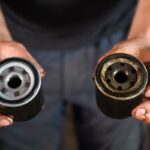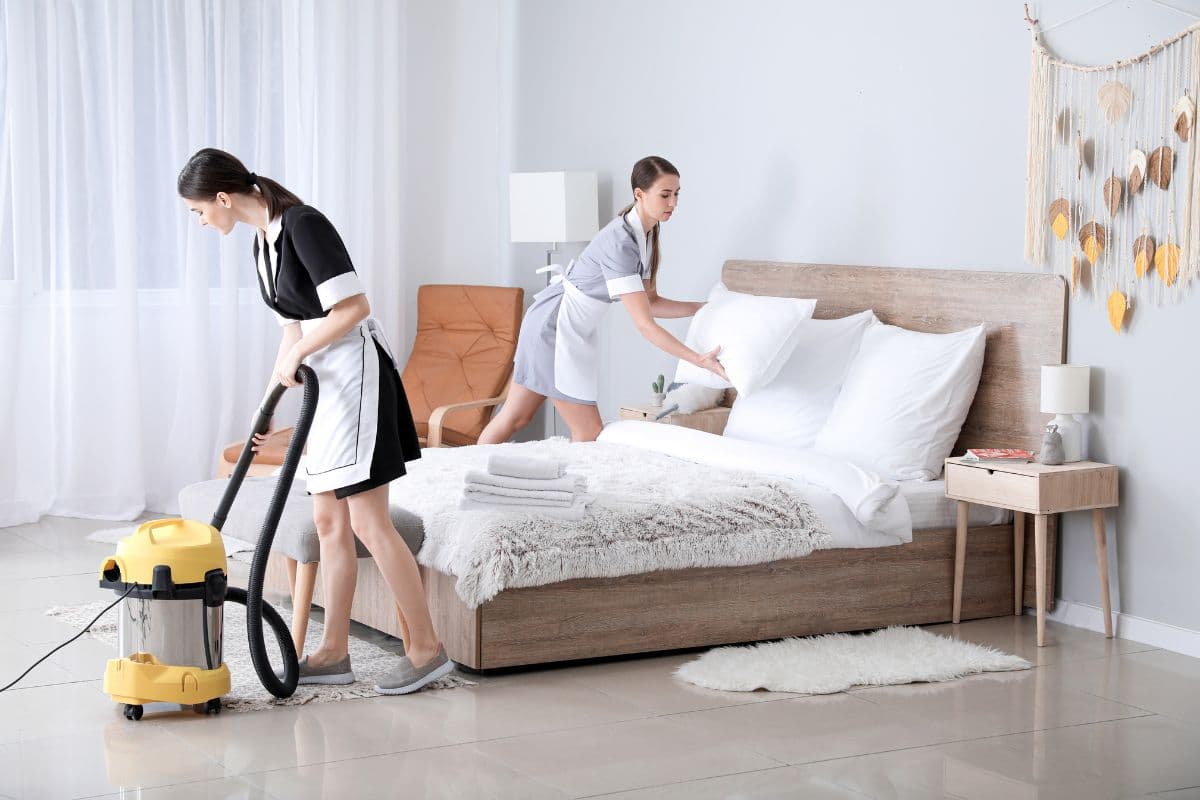Bleach is a potent cleaning agent. Its chemical properties make it an effective stain remover, but these properties also discolor and weaken the surfaces the bleach makes contact with. Can wood floors withstand the effects of bleach cleaning?
You can mop with bleach on wood floors, but it’s risky. Bleach discolors and ruins the structural integrity of wood by oozing into its fibers and damaging it inwardly. You can explore numerous alternatives to disinfect wooden floors, like non-chlorine bleach and commercial wood floor cleaners.
In this article, I’ll arm you with everything you should know before using bleach to mop your wood floor. We’ll also explore safe options you can use to deep clean your wood floor and precautions you should take if you choose to mop with bleach on wood floors.

Can You Mop With Bleach on Wood Floors?
We can liken bleach to that final tool in the box that you bring out to tackle the most stubborn stains. Some pet parents may also be tempted to use bleach to clean their pets’ pee on various types of floor surfaces. However, using bleach can be especially dangerous on wood floors.
Many bleaches contain sodium hypochlorite as their active ingredient, making them an effective weapon against stains and harmful microorganisms. However, sodium hypochlorite’s effect can sometimes look like using a hammer to kill a mosquito. Such an agent isn’t one you want to introduce to your wooden floors.
Bleach makes its way between wood fibers, changing its color molecularly and weakening its structure. While many wood floors are coated with a protective sealant, the finish is no match for bleach.
Mopping your wood floor with bleach would result in pale, discolored patches and fragile surfaces. The latter outcome can prove especially risky on stairs and balconies. And while it strips away your floor’s protective sealant, it exposes it to further damage by water and dust. These effects can be costly or impossible to reverse.
Avoiding these negative impacts while using bleach to clean wood floors is possible. You would need to follow these guidelines:
- Dilute the bleach. The CDC recommends diluting five tablespoons (71 grams) of bleach in a gallon (3.8 liters) of water. This rule applies if there are no explicit dilution instructions on the bleach’s label.
- Test the effect of the bleach on a small, unnoticeable section of the floor. This is especially important if you’re using a new bleach product. It limits any adverse effects to a small spot upon which you can repair easily and cheaply.
- Thoroughly rinse off the bleach soon after application. Doing so will reduce the time the bleach has to penetrate the wood floor’s fibrous network and wreak havoc therein. We’ll look into this in more detail below.
What’s the Best Way To Clean Wood Floors?
As with most surfaces, floors are easiest to clean if you’ve maintained them correctly over time. Preserving wooden floors would look like weekly or biweekly sweeping, vacuuming, and limiting their exposure to dirt and water from outside. Still, wood floors will occasionally need deep cleaning.
The best way to clean wood floors is to mop them with a cleaning product recommended by the floor manufacturer. Consulting this expert verifies that your floor can handle the cleaning agent you’ll apply. If this option is unavailable to you, use Greenguard Gold-certified hardwood cleaners.
Greenguard Gold-certified hardwood cleaners are low on harmful chemicals, making them safe for kids and pets while being tender to your wooden floors. You enjoy all these benefits while keeping your wood floors clean and disinfected.
Additionally, you can apply natural cleaning products from your pantry, like baking soda and white vinegar, to your wood floors. If you can contact the floor manufacturer or installer, ask them if the wood can withstand these agents.
Can I Use Clorox Bleach To Clean My Wood Floors?
Clorox is a common bleach that is now synonymous with “bleach” itself. The same restrictions we’ve discussed above apply to using Clorox to mop wooden floors, but they offer clarified steps for using theirs.
You can use Clorox Bleach to clean your wood floors if you mix ½ cup (100 grams) of Clorox in a gallon (3.8 L) of water. Pre-wash the floor, then mop it with the bleach solution. Leave the solution on the floor for five minutes, then rinse thoroughly.
Clorox stresses that your wood floor should be non-porous to ensure its safety during this treatment. You can find more information about this process on the Clorox Bleach bottles’ labels and their website.
How Long Can I Leave Bleach on Wood?
You can leave bleach on the wood for up to five minutes. This timespan avails a small window of opportunity for the bleach to infiltrate the wood’s fibrous bonds and cause damage. It’s best to work in small sections while mopping a wood floor with bleach so you can quickly rinse it off as you go.
If you want to bleach dark spots out of your wooden floor, you can allow the bleach to interact with those areas for around five minutes on softwood and up to an hour on hardwood.
Do You Need To Rinse the Floor After Mopping It With Bleach?
You need to rinse the floor thoroughly after mopping it with bleach. Doing so stops it from infiltrating and potentially damaging the wood’s finish and finding its way into its fibers. A thorough rinse also reduces bleach fumes, which helps return the room’s air to optimally safe levels.
Unrinsed bleached surfaces also present risks of slipping accidents as the bases, which constitute bleach, are slippery.
Since wooden floors are a tricky proposition for bleach, it’s only natural to wonder if washing dishes with bleach is safe. Find answers to this question in my article.
Conclusion
Bleach is a corrosive cleaner that damages wood floors irreparably. You can use it to clean your wood floors if necessary, but only if you’ve diluted it sufficiently and tested its effect on an inconspicuous floor area.
There are safer alternatives for cleaning and disinfecting wood floors, such as manufacturer-recommended hardwood cleaners and natural cleaning products. These options are non-corrosive ways to eliminate stubborn stains from wood floors.





